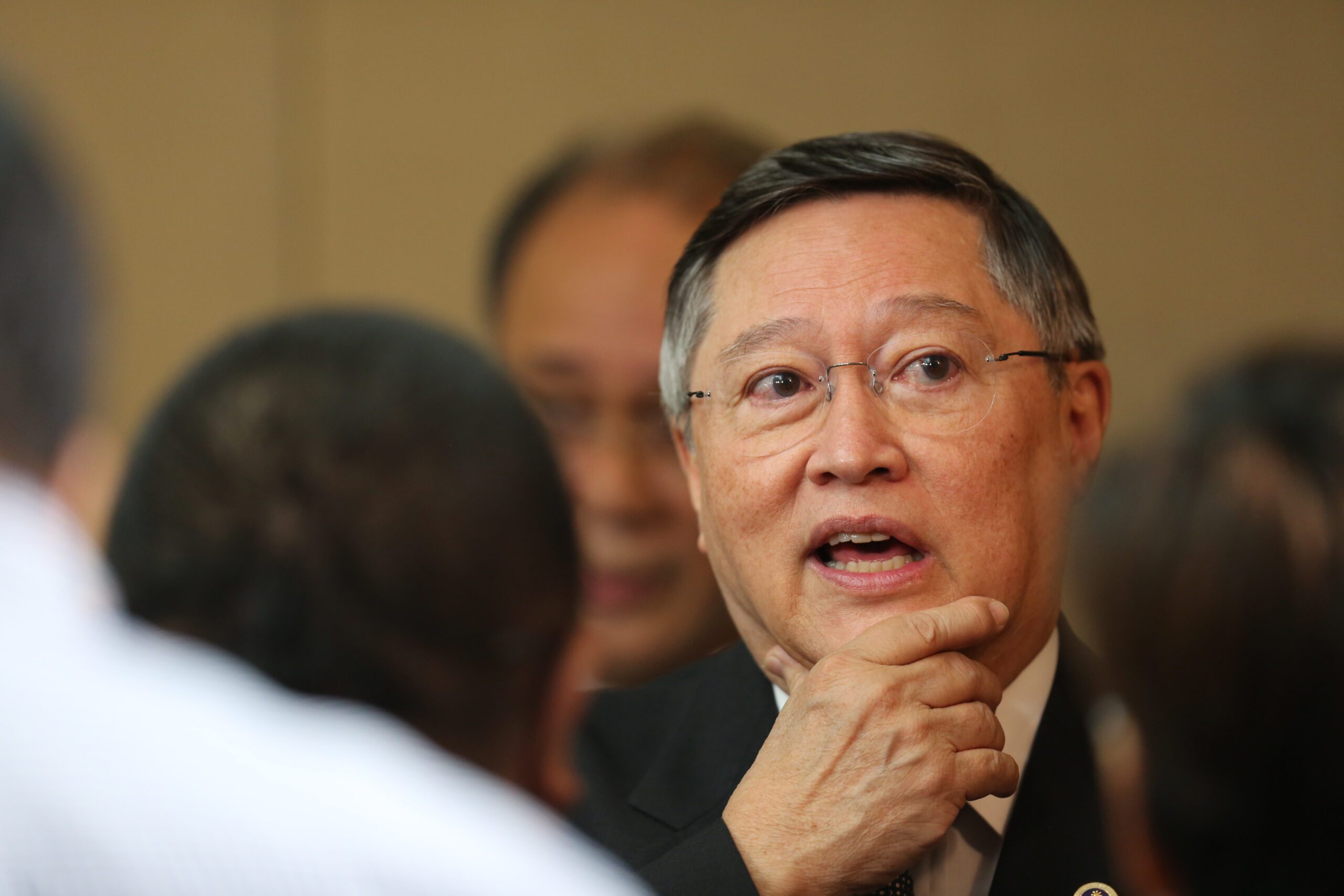SUMMARY
This is AI generated summarization, which may have errors. For context, always refer to the full article.

MANILA, Philippines – Speculations that the United States’ central bank will increase its interest rates is the “major reason” why the Philippine peso has fallen to its lowest level against the dollar in 7 years, said Finance Secretary Carlos Dominguez III.
The finance chief said this in response to a question on whether the peso weakened due to President Rodrigo Duterte’s statement about “separation” from the US.
“People are buying US dollars in order to be able to position themselves if and when the Fed (Federal Reserve) increases interest rates in the US. So that is one of the reasons, okay. And I think that’s a major reason for the slide in the peso,” Dominguez said in a press conference on Wednesday, November 2.
The Philippine peso slightly strengthened against the US dollar on Wednesday after the greenback depreciated due to increasing concerns over the upcoming US presidential elections.
The peso performed slightly better on Wednesday, closing at P48.370:$1, from Friday’s P48.405:$1. Local markets were closed on Monday and Tuesday for holidays.
On September 26, the local currency fell by P0.26 to close at P48.25:$1, breaching the P48:$1 mark.
Dominguez said local currencies all over the world have been depreciating against the US dollar.
“The Philippines, in the last month, actually from September 21 to October 28, went down by 1.5%. The Thai baht went down by 1%. The yen went down by 3.5%. So across the board, across the world, currencies have been depreciating against the US dollar and primarily, it’s because of the potential increase in interest rates in US dollar,” the finance chief said.
Dominguez added that the depreciation of the peso against the dollar is “not all bad” as it benefits several sectors such as exporters, the business process outsourcing (BPO) industry, and families of overseas Filipino workers (OFWs).
“When the peso slides, let’s say, 50 centavos, that means to say you have P25 billion more in the Philippines for people to spend. For people to buy condominiums, for people to spend for education for their children,” he said.
International, domestic events
For a BPI economist, the depreciation of the peso has been due to both international and domestic events.
Globally, the Philippine peso’s performance has been affected by speculation on the timing and moves of major central banks like the US Fed, the UK’s Bank of England (BoE), the European Central Bank (ECB), and the Bank of Japan (BoJ).
“July saw risk on sentiment driven by hopes for stimulus from both the BoJ and the BoE. Both failed to deliver. August, however, was risk-off as Fed officials hinted at hiking rates and Yellen had a big speech at Jackson Hole,” BPI associate economist Nicholas Antonio Mapa said in an email.
On the home front, the peso’s performance has been affected by capital flows, mostly from the equity market.
“September saw us have 22 straight days of foreign selling in the Philippine Stock Exchange index as foreign investors pulled out for various reasons,” Mapa told Rappler.
In the coming weeks, Mapa said the aggressive infrastructure build-up is seen to drive the importation of construction materials and capital machinery, which will cause pressure on the Philippine peso.
“In the short term, the peso may see some depreciation pressure, but this may be reversed as better infrastructure will improve the overall economic outlook of the Philippines and attract both portfolio and direct investment flows,” the economist said.
“If there are better aiports, roads, railroads and bridges, this may entice foreign direct investments to surge as companies set up shop, helping the peso to strengthen,” Mapa added. – Rappler.com
Add a comment
How does this make you feel?
There are no comments yet. Add your comment to start the conversation.